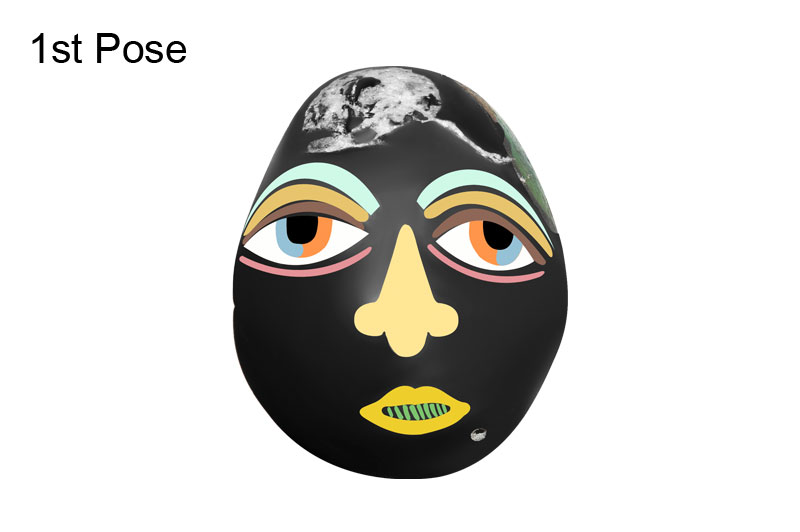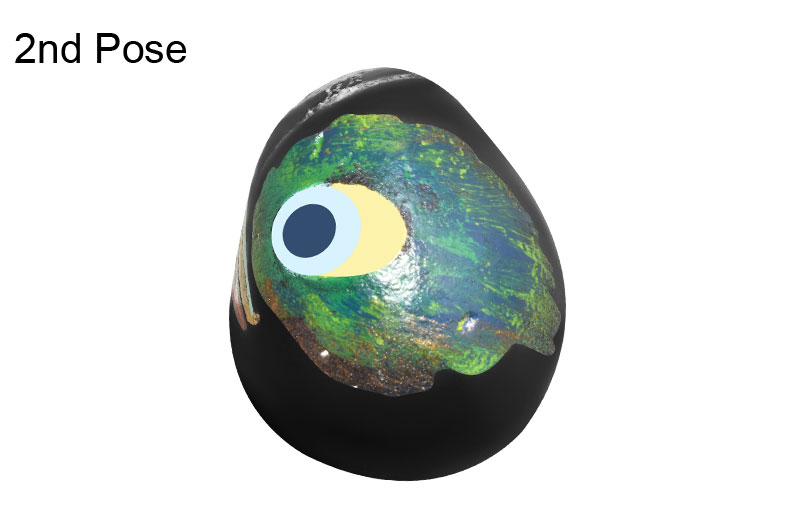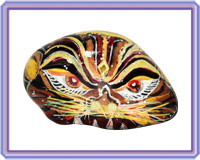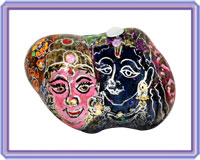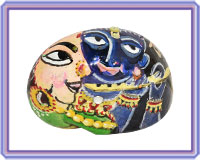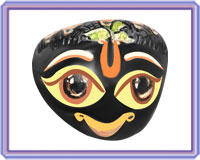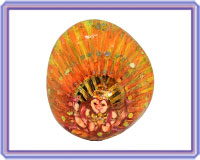Painted Jagannath Baladev Subhadra Govind and Narayan Shaligram: A Divine Connection
In the realm of Hindu worship, Shaligram Shilas hold a uniquely revered position. These sacred stones, primarily found in the Gandaki River of Nepal, are considered incarnations of Lord Vishnu and his various forms. While traditionally worshiped in their natural state, painted Shaligrams featuring depictions of deities such as Lord Jagannath Baladev Subhadra Govind and Narayan gained popularity among devotees. These artistic renditions enhance their spiritual and aesthetic significance, bringing divine forms to life in a tangible way.
All About Shaligram Shilas
Shaligram Shilas are natural fossils of ammonites, an ancient marine organism. These sacred stones are revered as direct manifestations of Vishnu, embodying his presence and divine energy. The intricate patterns and unique shapes found on Shaligrams are believed to symbolize the cosmic essence of creation, preservation, and destruction.Significance of Painted Jagannath Baladev Subhadra Govind and Narayan Shaligram
While the natural form of Shaligrams is symbolic in itself, painting them introduces a visual representation of deities that aids in devotional focus and personal connection. By painting Jagannath Baladev Subhadra Govind Narayan Shaligram, devotees infuse them with vibrant expressions of their divinity. The colors and designs not only beautify the shilas but also make the worship more intimate and engaging.The Forms and Their Symbolism
Lord Jagannath: Representing the universal form of Vishnu, the painted depiction of Jagannath on a Shaligram brings the essence of inclusivity and universal love. His large circular eyes symbolize his watchful presence over the universe.Baladev: As the elder brother of Jagannath, Baladev symbolizes strength, protection, and support. His painted form on a Shaligram reinforces the qualities of stability and guidance in the devotees life.
Subhadra: The sister of Jagannath and Baladev, Subhadra signifies compassion, grace, and auspiciousness. Her inclusion in painted Shaligrams enhances the balance of feminine energy in spiritual practices.
Govind: A form of Krishna associated with love, joy, and divine playfulness, Govinds painted form infuses the Shaligram with the essence of bliss and devotion.
Narayan: As the preserver of the universe, Narayans depiction on a Shaligram reflects his role as the eternal sustainer and protector of dharma.
Worshiping Jagannath Baldev Subhadra Govind Narayan Painted Shaligrams
Painted Shaligrams are worshiped with the same rituals as natural ones, but their vibrant appearances allow for a more personalized connection. They are bathed in water, anointed with sandalwood paste, and adorned with flowers. Devotees chant mantras specific to each deity while offering prayers, seeking blessings for prosperity, peace, and spiritual growth.Benefits of Painted Jagannath Baldev Subhadra Govind Narayan Shaligram
Enhanced Devotional Focus: The painted depictions provide a visual aid, deepening the meditation and spiritual experience.Aesthetic Appeal: The colorful forms make the sacred stones more inviting and engaging for both adults and children.
Easier Identification: For devotees unfamiliar with the unique patterns of natural Shaligrams, painted forms help easily identify the represented deity.
 Google has chosen Shaligram Shala ( shaligram.com) as the world's first 5 star
Google has chosen Shaligram Shala ( shaligram.com) as the world's first 5 star  rated Rudraksha supplying Company
rated Rudraksha supplying Company 


